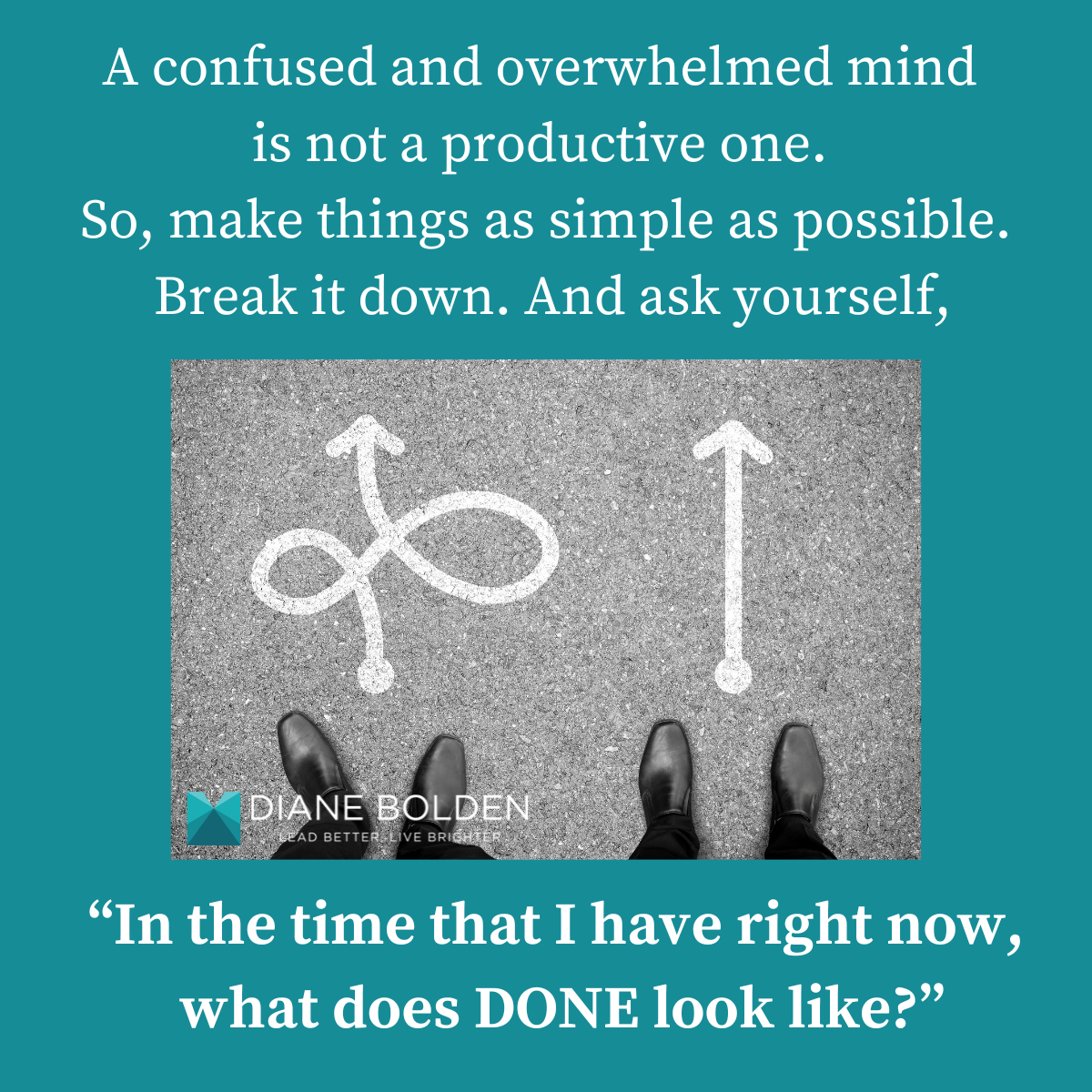From DOING to DONE: The Power of Simplicity & Focus
You’ve carved out the time, eliminated the distractions, and sat yourself down to finally do that important work you’ve been meaning to get to. But you just can’t get yourself to start.
Suddenly, all manner of things become more appealing… checking your inbox, thinking about what you’ll eat for lunch (or dinner), reorganizing the piles on your desk.
Before you know it, your time is up, and you feel like you haven’t really accomplished much.
If that sounds familiar, you aren’t alone. I’ve been there too. And I work with executives all the time who have similar experiences.
One of the most common assumptions people have that keeps them from executing is that they won’t be able to do justice to the work in the time they have. And when projects are large, sometimes they don’t even know where to start.
A confused mind is not a productive one. So, see if you can make things as simple as possible.
Break it down.
And ask yourself, “In the time that I have right now, what does DONE look like?”
Maybe you don’t have to have the whole problem solved or project completed. Perhaps you just need to do some research to find the answers to a few questions, make a couple of calls, or break out the steps you need to take moving forward.
If you can make the expectations you have of yourself realistic, you may find yourself more inclined to jump in (and less prone to distraction or derailment).
This is consistent with Victor Vroom’s expectancy theory of motivation, which has been a solid operating principle since the 1960’s. There are three components:
1.) The level of perceived satisfaction you’ll have when you achieve a goal.
Check in with your why. What is it about making progress on this thing you’ve set time aside for that is rewarding? How can you make it meaningful to you?
2.) Your belief that the effort you put in will allow you to perform.
If your definition of DONE is about moving the needle incrementally forward versus having everything finished (or perfect), you can proceed with greater confidence.
3.) The degree to which your performance will allow you reach your desired outcome. If you know the actions you take in the time you have will bring you closer to your ultimate goal, your desire to take that step will increase. (This is why many digital surveys feature progress bars that show how close you are to finishing.)
Never underestimate the power of simplicity. Sometimes you can do more when you focus on less.
Here’s to moving forward!
Diane

